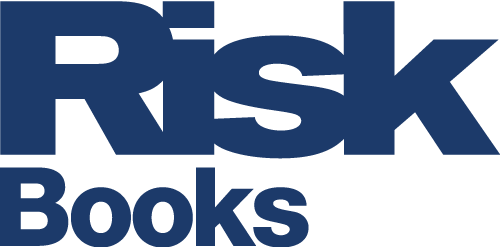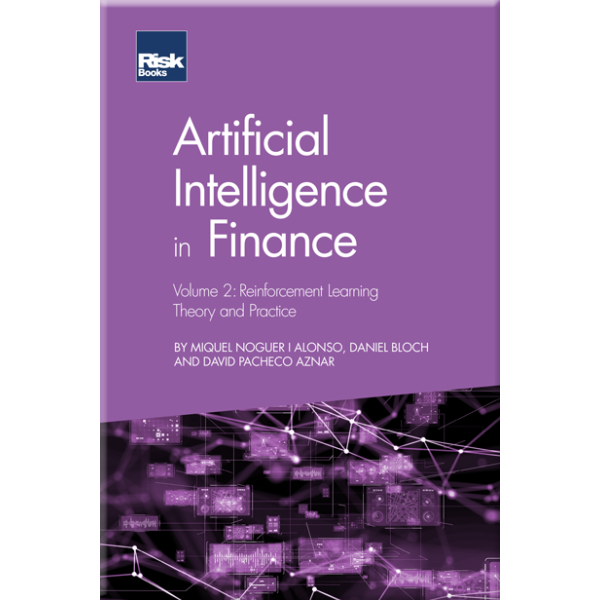Artificial Intelligence in Finance, Volume 2: Reinforcement Learning Theory and Practice
Redefine What’s Possible in Finance with Reinforcement Learning.
In this second volume of the Artificial Intelligence in Finance series, the authors explore how Reinforcement Learning (RL) is transforming financial modelling, strategy, and decision-making.
What You’ll Learn:
• Foundations first: Markov decision processes (MDPs), optimal policy learning, and general RL frameworks.
• Next-level techniques: Hybrid models that fuse RL with deep learning, stochastic approximation, temporal difference learning, and even large language models.
• Real-world impact:
o Portfolio and wealth management
o Algorithmic trading
o Options pricing and hedging
o Risk management and beyond
• State-of-the-art tools: Explore how Transformers and Graph Neural Networks handle complex financial datasets with unprecedented flexibility.
With a clear focus on practical application, this book blends rigorous theory with hands-on tools to help professionals and academics alike build smarter, more scalable financial systems.
Whether you're optimizing trading strategies, managing risk, or researching future-proof AI tools, this book is your roadmap to applying RL in the real world of finance.
Redefine What’s Possible in Finance with Reinforcement Learning.
In this second volume of the Artificial Intelligence in Finance series, the authors explore how Reinforcement Learning (RL) is transforming financial modelling, strategy, and decision-making.
At its core, RL allows models to learn from experience, dynamically adjusting their strategies based on feedback—successes or failures—at each step. This makes RL a game-changer for tackling multi-step, interdependent financial decisions and for designing entirely new algorithms to address unstructured, high-stakes challenges.
What You’ll Learn:
• Foundations first: Markov decision processes (MDPs), optimal policy learning, and general RL frameworks.
• Next-level techniques: Hybrid models that fuse RL with deep learning, stochastic approximation, temporal difference learning, and even large language models.
• Real-world impact:
o Portfolio and wealth management
o Algorithmic trading
o Options pricing and hedging
o Risk management and beyond
• State-of-the-art tools: Explore how Transformers and Graph Neural Networks handle complex financial datasets with unprecedented flexibility.
With a clear focus on practical application, this book blends rigorous theory with hands-on tools to help professionals and academics alike build smarter, more scalable financial systems.
Whether you're optimizing trading strategies, managing risk, or researching future-proof AI tools, this book is your roadmap to applying RL in the real world of finance.
Why This Book?
• Demystifies the power and limits of RL in finance
• Bridges the gap between academic theory and industry application
• Helps you build simulation-based, risk-aware, adaptive models
• Builds on Volume 1’s foundation—but stands strong on its own
For strategists, quants, data scientists, and curious minds—this is essential reading.
AI is changing finance. Reinforcement learning is leading the way.
| ISBN | 9781782724544 |
|---|---|
| Navision code | MAIF2 |
| Publication date | May 2nd 2025 |
Miquel Noguer i Alonso, Daniel Bloch and David Pacheco Aznar
Miquel Noguer i Alonso is a seasoned financial professional and academic with over 30 years of experience in the quantitative finance industry. He is the founder of the AIFI and head of development at Global AI. His career includes the roles of executive director at UBS AG and chief information officer for Andbank. He has served on the European Investment Committee at UBS for a decade and is on the advisory board of the Financial Data Professional (FDP) Institute and the CFA Society of New York. Miquel is also an academic, teaching AI, big data and fintech at the NYU Courant Institute, NYU Tandon, Columbia University and ESADE (Spain), among others. He pioneered the first fintech and big data course at the London Business School in 2017. He is the author of 10 published papers on artificial intelligence. Miquel holds an MBA and a degree in business administration from ESADE and a PhD in quantitative finance from Universidad Nacional de Educación a Distancia (UNED), as well as professional certifications. His research interests include asset allocation, machine learning, algorithmic trading and fintech.
Daniel Bloch is the founder of Quant Finance Limited, a structuring company that focuses on statistical arbitrage on stocks, futures and options' relative value as well as derivatives pricing and risk management. He has over 20 years’ experience in modelling equity, foreign exchange and interest rates on the exotic option trading desk of various investment banks across the world. Daniel has developed bespoke solutions to solve problems for the industry using machine learning. He has an extensive background in and knowledge of applied mathematics, engineering, algorithms, physics and machine learning, applying a cross-application approach between finance and industry. He has partnered with the best research teams at École Polytechnique, Imperial College London and the University of Oxford.
David Pacheco Aznar is a computational mathematician and data scientist whose focus is on quantitative finance. He has been a quantitative analyst for an investment group in Barcelona for almost four years, as well as a quantitative researcher at the Artificial Intelligence Finance Institute (AIFI) for a year. As a quantitative analyst, he developed several back-testing strategies for various models via both classic and deep learning methods. In addition, he worked on language-model-oriented solutions to boost the predictive power of portfolio management strategies. His research output has resulted in over 1,000 Social Science Research Network (SSRN) downloads over the last year, and his papers covered generative models for time series and deep distributional reinforcement learning research and advancements in the field of portfolio management. He has been a teaching fellow at Columbia University for big data and AI and recommender systems courses. David has also been a guest speaker at New York University, where he has spoken about generative models in finance, reinforcement learning and deep reinforcement learning in portfolio management.
| Chapters | |
| Preface | |
| 1 | Introduction |
| 2 | Markov decision problems |
| 3 | Learning the optimal policy |
| 4 | Reinforcement learning revisited |
| 5 | Temporal difference learning revisited |
| 6 | Stochastic approximation in the Markov decision process |
| 7 | Large language models: reasoning and reinforcement learning |
| 8 | Deep reinforcement learning |
| 9 | Applications of artificial intelligence in finance |
| 10 | Pricing options with temporal difference backpropagation |
| 11 | Pricing American options |
| 12 | Daily price limits |
| 13 | Portfolio optimisation |
| Appendix | |



